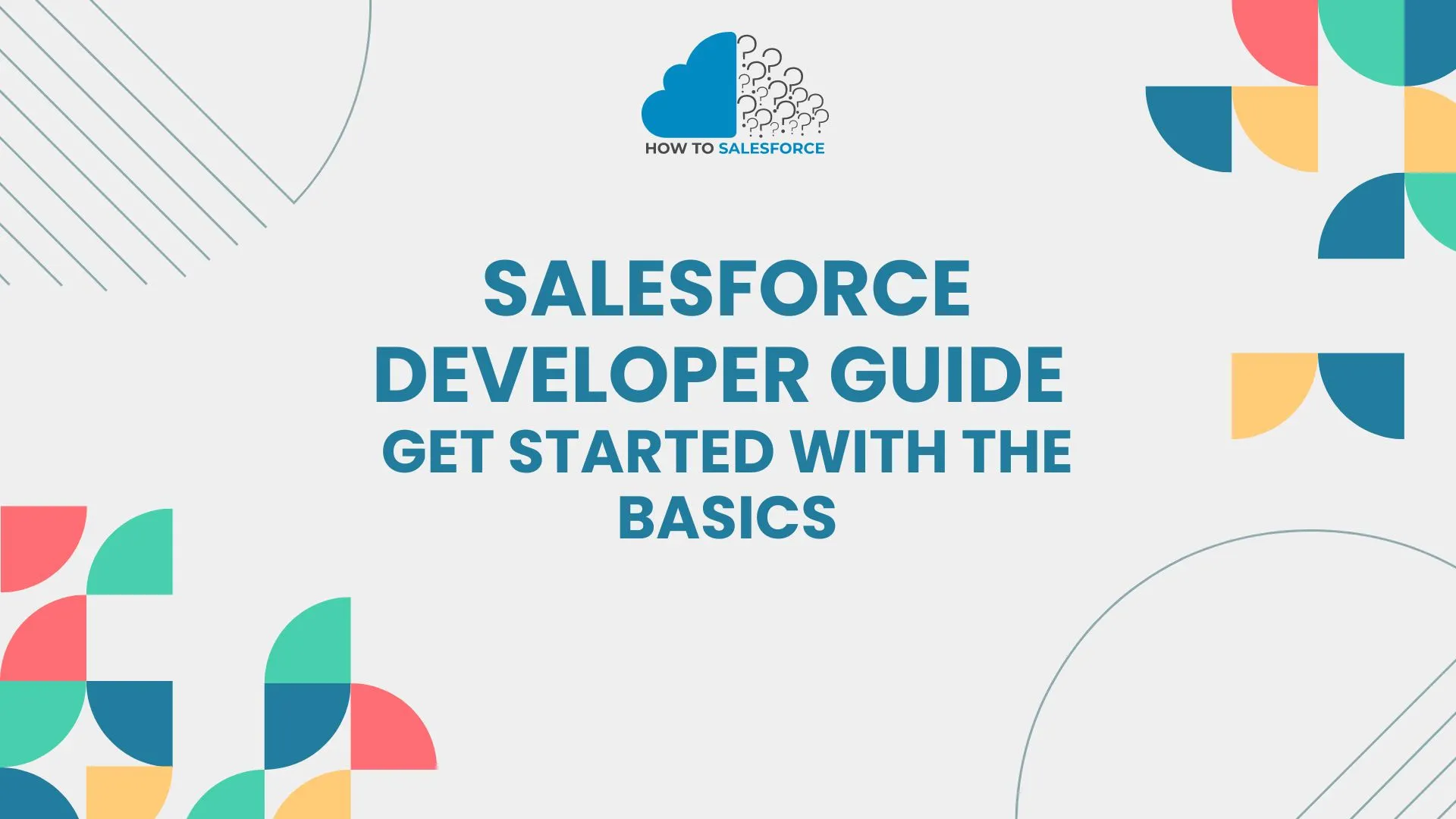Introduction
If you want to work as a Salesforce developer, you might find it hard to get around the platform’s many features. This Salesforce developer guide gives you smart tips and doable steps to help you get the skills you need to succeed, from understanding basic ideas to looking into cutting-edge methods.
Understanding metadata is crucial for every Salesforce developer. Explore this in-depth guide on what metadata in Salesforce entails to see how it shapes the development landscape.”
Comprehending Salesforce Development
What is Salesforce?
Salesforce is a customer relationship management (CRM) software that runs in the cloud, enabling businesses to track customer data, sales processes, and customer contacts. There are many tools and features that businesses can use to make and change their applications. Businesses require Salesforce engineers to customize these apps to meet their specific needs.
- CRM Platform: Handles data and customer relationships.
- Customizable: Enables companies to modify apps to suit their requirements.
- Cloud-Based: Easily accessed from any location with internet connectivity.
What does a Salesforce developer do?
Salesforce developers create, alter, and manage Salesforce apps. This position requires using Apex, Visualforce, and Lightning Components. Salesforce developers integrate with other systems to ensure smooth operations. Read more. What does Salesforce Developers do?
- Custom Development: Constructing unique apps, workflows, and objects.
- Integration: Establishing a link between Salesforce and other platforms.
- Automation: Putting in place automated procedures to make commercial operations more efficient.
Beginning the Salesforce Development Process
Crucial Competencies for Salesforce Programmers
To become a good Salesforce engineer, you need to have both hard and soft skills. Here are some of the most important skills:
- Apex Proficiency: Compose and comprehend Apex code to develop unique apps.
- Visualforce Knowledge: Utilize Visualforce to design custom user interfaces.
- Awareness of Lightning Components: Utilize Lightning to create dynamic and responsive user interfaces.
- Comprehension of SOQL and SOSL: To query data, use Salesforce Object Search Language (SOSL) and Salesforce Object Query Language (SOQL).
- Problem-Solving: Recognize problems and create workable fixes.
- Communication Skills: Collaborate effectively with stakeholders and teams.
Learning Tools and Resources
Before creating for Salesforce, ensure you have access to the necessary tools and resources. Here are some options that come to mind:
- Salesforce Trailhead: An interactive, free learning resource featuring modules covering a range of Salesforce subjects.
- Salesforce Developer Documentation: The official documentation for all Salesforce features and tools is available on the Salesforce Developer Documentation website.
- Community Forums: Participate in assistance and knowledge exchange with the Salesforce developer community.
Important Ideas for Salesforce Development
Gaining Knowledge about Salesforce Objects
Salesforce objects form the foundation of the Salesforce data model. There are two main types of objects: standard objects, such as Accounts, Contacts, and Opportunities, and custom objects, which are created to meet specific business needs.
- Standard Objects: Salesforce’s pre-built objects.
- Custom Objects: Objects made by developers to hold distinct information particular to a company.
Using Salesforce Information
People who work as developers for Salesforce need to know how to work with data on the site. Part of this involves understanding how objects relate to each other, the available data types, and how to utilize validation rules.
- Object Relationships: Describe the connections between objects (e.g., lookup, master-detail).
- Data Types: Ensure that information is stored and protected appropriately and safely.
- Validation Rules: Ensure data accuracy by establishing requirements that it must meet.
Automating Operations Management
One of the best things about Salesforce is that it can automate and streamline tedious tasks. Developers use tools such as Workflow Rules, Process Builder, and Flow to automate processes in Salesforce.
- Workflow Rules: Automate easy tasks according to predetermined standards.
- Process Builder: Create more complex automation that consists of multiple steps.
- Flow: Utilize visual flowcharts to design and implement complex automation.
Advanced Methods for Salesforce Development
Apex Classes and Triggers
Code can be run before or after adding, changing, or removing records from a database with Apex triggers. The business logic is stored in classes, which are used to instruct objects on how to behave.
- Apex Triggers: Programmatically initiate custom procedures in response to specific events.
- Apex Classes: Specify the attributes and functions of unique objects.
Lightning and Visualforce Components
The two primary tools for creating user interfaces on the Salesforce platform are Lightning and Visualforce. This is because Visualforce is written in a tag-based language, similar to HTML. However, Lightning Components enhance the user experience, making it more modern and dynamic.
- Visualforce: For creating custom programs and webpages.
- Lightning Components: Create dynamic, quick, and responsive websites.
Connecting Other Systems to Salesforce
Salesforce users often need to integrate the platform with other systems, such as marketing tools, ERP systems, or competing CRM systems. This can be accomplished with tools, APIs, or programs specifically designed for that purpose.
- REST and SOAP APIs: Utilize these to integrate Salesforce with other online resources.
- Middleware: Complex integrations can be facilitated by programs like MuleSoft.
- Custom Solutions: Write original code to meet specific integration needs.
Optimal Techniques for Developing Salesforce
Using an Approach to Collaborative Development
Often, a team focuses on developing Salesforce. A collaborative method ensures the project progresses swiftly and everyone reaches a consensus on the necessary tasks.
- Agile Methodology: Use frequent feedback loops in iterative development.
- Version Control: Manage code changes and teamwork with Git and other tools.
- Code Reviews: To ensure consistency and quality, review code on a regular basis.
Ensuring Compliance and Security
When working with private data, security and adherence to rules must be the first priorities for Salesforce workers. This means adhering to the industry standards for data protection, access control, and compliance.
- Data Security: Utilize data masking, field-level encryption, and secure storage techniques.
- Access Control: To control user access, employ role-based access and permission sets.
- Compliance: Verify that the development complies with pertinent laws and regulations, such as HIPAA or GDPR.
Enhancement of Performance
To provide users with a seamless experience, the speed of the Salesforce tool needs to be enhanced. This includes handling the limits set by the governor, optimizing query performance, and writing code that functions efficiently.
- Efficient Code: Create code that is simple to maintain and effective.
- Query Optimization: To speed up load times, optimize SOQL queries.
- Governor Limits: Recognize and respect Salesforce’s limitations to avoid system outages.
Certifications for Salesforce Developers
Certifications’ Significance
Certifications are highly beneficial for Salesforce workers, as they demonstrate their proficiency and expertise. These things also help a worker get hired and show that they are trustworthy.
- Skill Validation: Demonstrates proficiency in Salesforce development.
- Career Advancement: Offers access to better job opportunities and higher-level employment.
- Industry Recognition: Acknowledged as a global indicator of Salesforce expertise.
Important Salesforce Developer Credentials
There are various certificates that focus on different aspects of the Salesforce platform, allowing writers to choose from a range of options.
- Platform Developer I: This certification covers the foundations of Salesforce development.
- Developer II: Emphasizes best practices and advanced programming abilities.
- Salesforce Certified JavaScript Developer I: Verifies proficiency with the Salesforce platform and JavaScript development.
- B2C Commerce Developer: Has expertise creating B2C commerce platform solutions.
Difficulties Salesforce Developers Face
Remaining Current on Platform Modifications
Salesforce is a tool that continually improves with the addition of new features and updates.
Coders must stay current to hone their skills and learn new tools and methods.
- Ongoing Education: Attend regular training sessions and maintain your certifications to stay current.
- Involvement in the Community: Take part in forums and events for the Salesforce community.
- Keeping Up with Releases: Examine Salesforce updates and release notes on a regular basis.
Handling Difficult Projects
Salesforce projects can range from simple system tweaks to complex system integrations. To successfully lead these kinds of projects, you need to have strong project management skills and the ability to solve and deal with problems in a competent way.
- Project Management: Manage tasks and deadlines with Jira or Trello.
- Problem-Solving: Gain proficiency in promptly recognizing and resolving problems.
- Client Communication: To ensure project alignment, maintain open lines of communication with clients and stakeholders.
Handling Data Transfer
Data movement is a common task for Salesforce workers, particularly when transferring data from legacy systems to Salesforce. Careful planning and execution are necessary to prevent data loss or damage.
- Data Mapping: Transfer data fields from Salesforce objects to the legacy system.
- Data Cleaning: Eliminate redundant and inconsistent data.
- Validation and Testing: Conduct comprehensive testing to guarantee data integrity upon migration.
Conclusion
To succeed in this exciting and fulfilling industry, you must acquire the knowledge and abilities listed in this Salesforce developer guide. By leveraging the power of the Salesforce platform, Salesforce developers will have an important influence on the future of enterprises, from understanding fundamental concepts to tackling complex procedures and challenges.
This guide provides a comprehensive plan for navigating the world of Salesforce development with ease, regardless of your level of experience.


